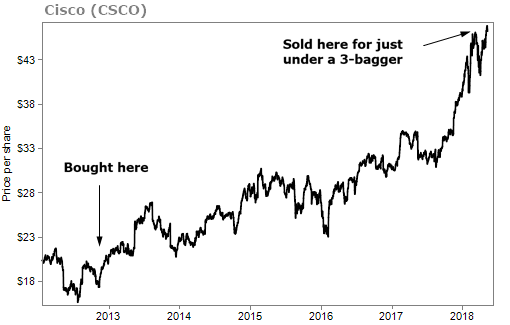"Things must really be bad. Even Doc's finally getting bearish."
I've heard similar comments from readers these past few weeks. They noticed a change in my writing. It's not surprising. I've earned a reputation for my optimism on this current bull market. The only analyst more bullish is probably our own Steve Sjuggerud.
But when the facts change, I change my mind...
I've become concerned about the market. To me, we're no longer in a "close your eyes and buy anything" type of market like we saw over the past few years. There's real trouble brewing under the surface of the market today...
The fact is, we're facing a serious debt issue.
In the next five years, $2 trillion in U.S. corporate debt will come due. More than $1 trillion of that rates as junk.
And companies with debt greater than six times earnings – considered a high level of leverage – will owe $319 billion. Examples include SeaWorld Entertainment (SEAS) and General Electric (GE).
It's not that companies are wildly inappropriate by loading up on debt. They simply had to take on debt. With interest rates low and a growing economy pushing earnings higher, investors hung money out there at such cheap prices that companies had to take it.
But when there's a substantial pullback in the market, companies won't be able roll over their debts or even pay off the interest on their debts... especially as interest rates rise.
Now to be clear, this is not a "sell everything" type of warning...
The bull market could still run further. Typically, when there's a peak in the market, we see analysts predict extremely high earnings estimates. We're not there yet. As we mentioned last week, companies are crushing expectations. With earnings season nearly over, 78% of companies have beaten analysts' estimates.
But when we see analysts ratchet up their estimates, projecting higher and higher earnings growth... that will signal a market top.
So, we don't want to move to all cash and we don't want to load up on risk, either. Well then, what do we do?
What to Target Before the Downturn Strikes
I recently gave my Retirement Millionaire subscribers the game plan. In fairness to my paid-up subscribers, I can't share every detail, but the basics are simple...
First, we still want to invest in companies that we think will surge higher and reward shareholders over the next few years – even during a turbulent market.
Just last month we recommended a world-dominating company that we think has the potential to beat the broader market by several times over as it profits from what we're calling the "next tech hurricane."
It is not a risky stock and gives us plenty of upside. This is the type of stock we'll target before the downturn strikes.
The second part of our plan is re-evaluating our portfolio. You've probably heard that a buy-and-hold strategy is the best investing strategy. And that's what we use in Retirement Millionaire. But there comes a time when changes happen, either in the company or in the market. At that point, holding might not be the best strategy anymore.
That's why we recently sold a few long-held positions in our Retirement Millionaire portfolio and booked some fantastic profits. For example...
Back in November of 2012, we bought shares of computer networking giant Cisco (CSCO). It was a high-growth company that had its products everywhere. It's also a company that buys back a lot of its shares and pays a high dividend. (That's part of the reason why we've done so well on this investment.)
But our outlook on the company has changed. It's not growing the way it was back in the early 2010s. The way we transfer information has changed a lot since then and customers buy less of Cisco's hardware. Cisco, for its part, has tried to sell more software and security products, with mixed results. Given our concern for the overall market and the change in the company's outlook, it was time to move on.
We booked a 198% gain by closing the position...
Could we have squeezed a higher profit out of Cisco if we keep holding? Sure. But we could have also given up a lot of our profits if the market turned and punished firms that did not grow their revenues.
We always recommend following trailing stops, but urge you to evaluate new information. Take time over the next few days to analyze your portfolio. Is the initial reason you bought the company still true today? Remember, taking profits is never a bad thing.
By selling some positions, we've raised cash that we can use for future opportunities. Mostly, when the correction happens, we're going to be ready to scoop up the best businesses in the world for bargain prices.
The best investment you could have made in the last 10 years was to buy levered-but-healthy companies in the middle of the 2008 credit crisis. And that's the kind of opportunity we're excited about.
For those who have ever considered subscribing to my Retirement Millionaire newsletter, now is the perfect time. With all the uncertainty in the market today, my team and I find companies to beat the downturn. We will also find the best businesses to buy at a discount after the market tanks.
I encourage you to give Retirement Millionaire a try with a 100% risk-free trial.
What We're Reading...
- Student loan debt hits all-time high.
- Something different: A Supreme Court ruling favors sports betting.
Here's to our health, wealth, and a great retirement,
Dr. David Eifrig and the Health & Wealth Bulletin Research Team
May 16, 2018

